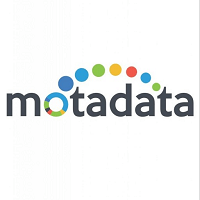What Are The Recent Trends In IT Infrastructure Monitoring Tools?
In recent years, several important trends have emerged in the IT infrastructure monitoring tools industry, influencing how enterprises approach IT system monitoring and management. These trends are driven by the increasing complexity and diversity of IT environments, as well as the ever-changing technological landscape.
These are the most important trends to look for when buying an IT infrastructure monitoring solution.
1. Cloud-Based Monitoring: As more firms shift their systems to the cloud, cloud-based monitoring has grown in popularity. This trend is being driven by the advantages of scalability, cost-effectiveness, and accessibility that cloud-based monitoring provides. This strategy involves hosting monitoring tools on the cloud, allowing users to monitor their IT infrastructure from anywhere and at any time, without the requirement for on-premises gear or software.
2. AI And Machine Learning Capabilities: As the volume of data created by IT infrastructure grows, AI and machine learning capabilities will become increasingly important for effective and proactive monitoring. These technologies enable monitoring systems to automatically evaluate and discover trends and anomalies in data, providing useful insights and assisting in the prevention of possible problems before they arise.
3. Real-Time Monitoring: As our reliance on digital infrastructure grows, the capacity to monitor systems in real-time has become vital. Real-time monitoring technologies continuously monitor IT infrastructure, allowing for the instant detection and resolution of any errors or anomalies. This trend is motivated by enterprises' need to maintain high levels of availability while minimizing downtime.
4. Integration With Other IT Tools: IT infrastructure monitoring technologies are now being built to function smoothly alongside other IT tools like APM (Application Performance Monitoring) and NPM (Network Performance Monitoring). This contributes to a more comprehensive and holistic picture of IT environments, allowing firms to discover and resolve issues more efficiently.
5. Emphasis On User Experience: As IT infrastructure monitoring gets increasingly complicated, monitoring technologies must be simple to use and comprehend. Vendors improve the user experience of their monitoring solutions in a variety of ways, including user-friendly interfaces, informative dashboards, and configurable alerts.
Benefits Of Using IT Infrastructure Monitoring Tools
Introduction: IT infrastructure monitoring solutions are crucial for every business that relies on technology to run smoothly. These solutions provide a complete image of the IT infrastructure, including networks, servers, applications, and devices, allowing for proactive management and troubleshooting.
We'll look at the multiple advantages of using IT infrastructure monitoring solutions and how they may help your organization's performance and efficiency.
1. Real-Time Visibility: One of the most significant benefits of using IT infrastructure monitoring tools is that they provide real-time information about the performance and health of your IT systems. These tools enable you to track crucial data such as CPU consumption, memory utilization, network traffic, and so on. Real-time visibility enables IT personnel to detect and handle potential issues before they become costly problems.
2. Proactive Problem Detection: IT infrastructure monitoring systems use advanced algorithms and machine learning to detect potential issues in the IT environment. This proactive approach allows IT personnel to stay on top of problems and reduce downtime, possibly saving businesses thousands of dollars in lost revenue. IT teams can reduce operational disruptions by identifying and resolving issues before they impact end users.
3. Centralized Monitoring: When a company uses various systems and applications, it can be tough to track all of the tools and their performance. IT infrastructure monitoring systems provide a centralized approach that enables IT professionals to monitor their whole infrastructure from a single dashboard. This simplifies and streamlines the monitoring process, which saves time and resources.
4. Improved Resource Management: IT infrastructure monitoring tools provide information on the utilization of resources like servers and network devices. This data enables IT teams to identify underutilized and overutilized resources, allowing for more informed resource allocation decisions. Businesses can reduce costs and improve the overall performance of their IT systems by optimizing resource consumption.
5. Improved Security: Security threats are a big worry for businesses of all kinds, and IT infrastructure monitoring solutions can help to mitigate these risks. These applications examine network traffic to identify potential security issues or anomalies. This early detection allows IT teams to respond promptly and avoid cyberattacks and data breaches, ensuring the security and integrity of sensitive information.
6. Compliance And Reporting: Many industries have legal requirements that businesses must follow, and IT infrastructure monitoring tools can help with this. These technologies monitor and record performance parameters, which are subsequently used to generate compliance reports. This feature not only assists firms in meeting industry standards, but it also streamlines auditing and reporting procedures.
Important Factors To Consider While Purchasing IT Infrastructure Monitoring Tools?
When it comes to maintaining your IT infrastructure, the correct monitoring tools are essential. They provide real-time visibility into your systems, allowing you to identify and handle issues before they become serious problems. However, with so many options on the market, it can be difficult to select the best IT infrastructure monitoring tool for your firm.
To help you make an informed selection, here are some crucial elements to consider when choosing IT infrastructure monitoring solutions.
1. Scalability: Because your infrastructure is likely to develop and evolve over time, you must select a tool that can meet your current requirements while also accommodating future growth. Check if the tool is scalable and can monitor a large number of devices and applications without sacrificing speed.
2. Usability: The product should be easy to use, with a straightforward and intuitive UI. Your IT crew should be able to explore and configure the monitoring tool without considerable training.
3. Compatibility: Ensure that the monitoring tool is compatible with your existing infrastructure. It should support the operating systems, apps, and devices that are critical to your organization.
4. Real-Time Monitoring: The tool should provide real-time monitoring of your systems, providing you with an accurate and up-to-date picture of the health of your infrastructure. It should also include alerting capabilities, allowing you to respond swiftly to any problems that develop.
5. Customizable Dashboards: Look for a platform that lets you present the metrics and statistics that are most important to your business. This will provide you with a detailed picture of your infrastructure's performance.
6. Integration Capabilities: Your monitoring tool should be able to communicate with other tools and systems you employ, such as ticketing, automation, and analytics platforms. This will help to streamline your processes and increase overall efficiency.
7. Cost: When choosing a purchase, you should constantly consider your budget. While investing in a high-quality monitoring tool is critical, make sure to consider the tool's pricing and features to ensure they meet your business's demands and budget.
8. Assistance And Updates: The manufacturer should provide consistent technical assistance as well as frequent software updates to guarantee that your tool runs smoothly and meets your changing needs.
9. Evaluations And Reputation: Conduct research and read evaluations from previous customers to gain a better knowledge of the tool's effectiveness and dependability. Additionally, look into the vendor's reputation and customer satisfaction rate. By taking these aspects into account, you can make an informed decision on the best IT infrastructure monitoring tool for your firm. With the correct tool, you can ensure that your infrastructure is stable and performs optimally, resulting in increased efficiency and productivity.
What Are The Key Features To Look For In IT Infrastructure Monitoring Tools?
When it comes to selecting the best IT infrastructure monitoring solution, there are a few essential qualities that all buyers should consider.
Let's look at each of these characteristics in depth.
1. Scalability: Scalability is a key consideration when selecting an IT infrastructure monitoring solution. Your monitoring requirements will rise in tandem with your business. As a result, it is critical to select a tool that can grow with your company and manage bigger amounts of data while maintaining performance.
2. Real-Time Monitoring: In today's fast-paced corporate climate, every second is valuable. That is why real-time monitoring is an essential feature to seek for in an IT infrastructure management application. Real-time monitoring allows you to proactively detect and handle issues before they disrupt your business operations.
3. Data Visualization: Monitoring solutions that include data visualization capabilities can provide valuable insights into the health and performance of your IT infrastructure. Look for tools that allow you to create customisable dashboards, graphs, and charts to better comprehend your data and make educated decisions.
4. Alerting And Notification: It is critical to select a monitoring tool that includes alerting and notification capabilities. This will ensure that you are instantly aware of any problems or anomalies in your IT infrastructure, allowing you to take corrective action and avoid catastrophic disruptions.
5. Comprehensive Coverage: IT infrastructure is made up of many different components, such as servers, networks, databases, applications, and so on. It is critical to select a monitoring technology that provides extensive coverage and can manage all of these components from a single centralized platform.
6. Integration Options: Another important factor to evaluate is the tool's integration capacity. In today's highly interconnected IT ecosystem, it is critical to select a monitoring tool that can work seamlessly with other systems and tools, such as ticketing systems, analytics platforms, and so on.
7. Customization And Flexibility: Each organization has distinct monitoring requirements, and a one-size-fits-all solution may not be appropriate for all. That is why it is critical to look for a tool with customizable and flexible features. This allows you to personalize the tool to your individual monitoring needs.
8. Usability: Monitoring tools should be simple to use and browse. Look for solutions with an easy-to-use UI and minimum training requirements, so your team can get started right away. By taking these crucial qualities into account, you can choose the best IT infrastructure monitoring solution for your company's needs and help you keep your IT systems healthy and performing well.
Conclusion
Conclusion: After analyzing and comparing several IT infrastructure monitoring tools, it is clear that investing in one can significantly benefit firms by improving performance, lowering downtime, and increasing overall efficiency. However, not all products are made equal, and buyers must properly examine their needs before making a decision. Key considerations to consider include scalability, compatibility, and ease of use.
In this buyer's guide, we've gone over the most important features and capabilities to look for when selecting an IT infrastructure monitoring tool, such as comprehensive server, network, and application monitoring, real-time alerting and reporting, and configurable dashboards and visualizations. We've also highlighted some of the top tools on the market, such as Nagios XI, Zabbix, and SolarWinds Network Performance Monitor.
Ultimately, the ideal IT infrastructure monitoring tool for your firm will be determined by your individual needs and budget. We strongly advise you to try out several tools via free trials or demos before making a purchase. Furthermore, staying up to date on industry trends and updates will help you stay ahead of any infrastructure difficulties while also maintaining a stable and secure IT environment. Businesses that use the correct IT infrastructure monitoring tool may manage their technology proactively and stay ahead of the competition.




















